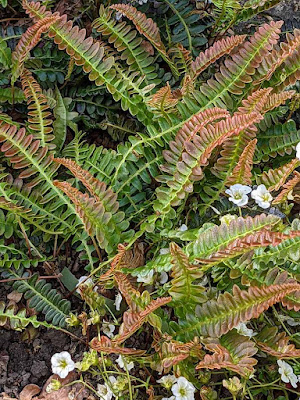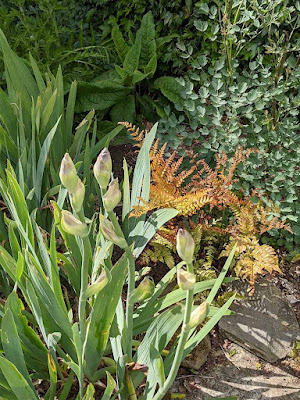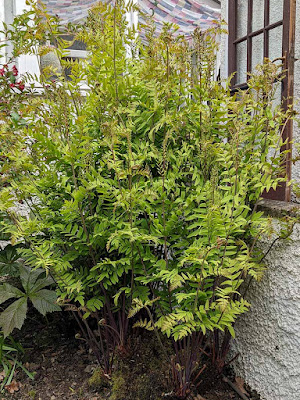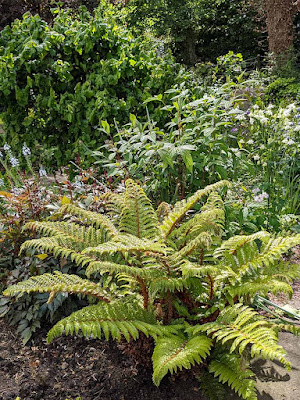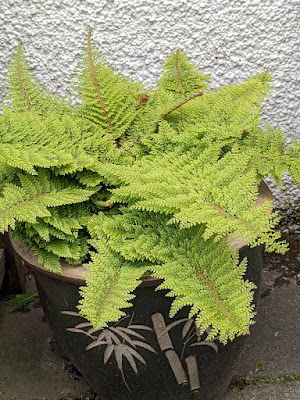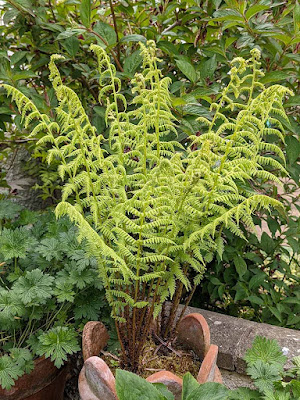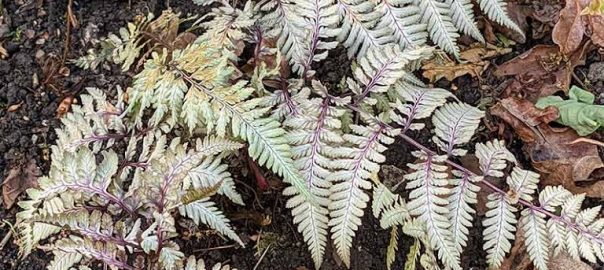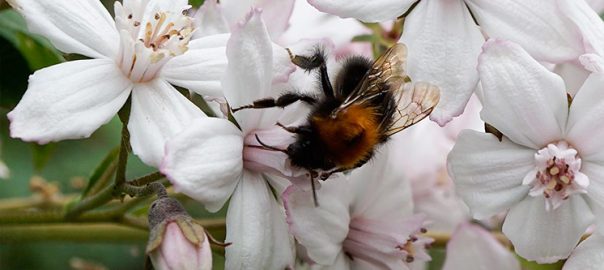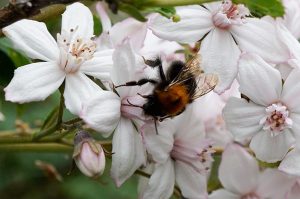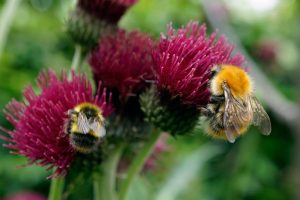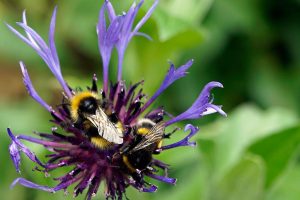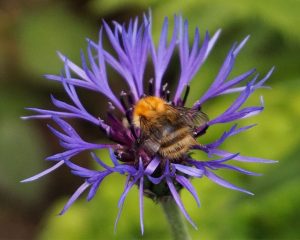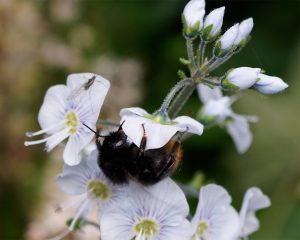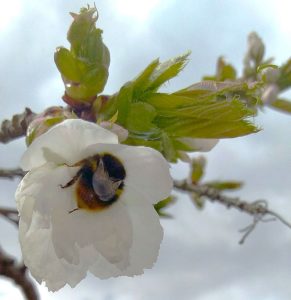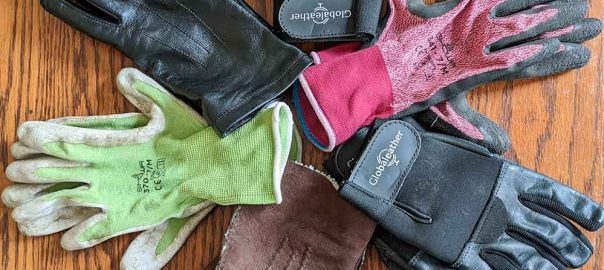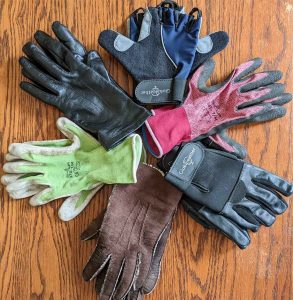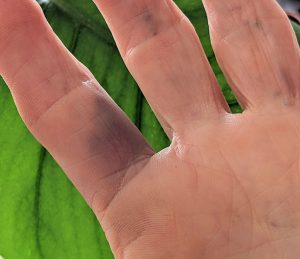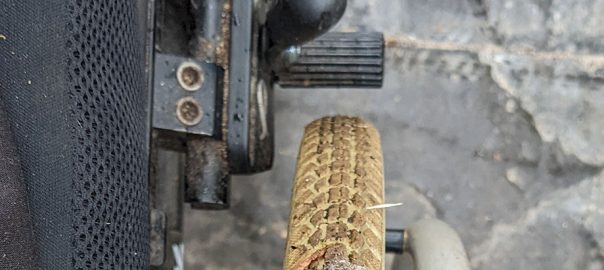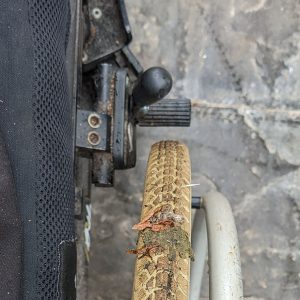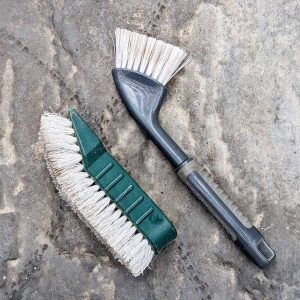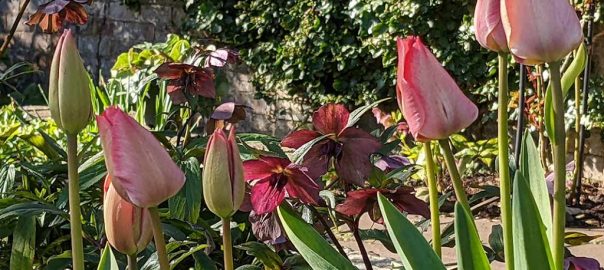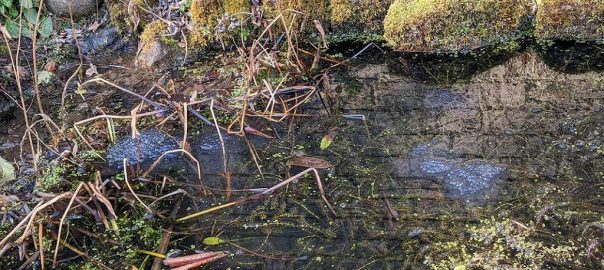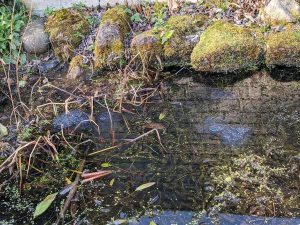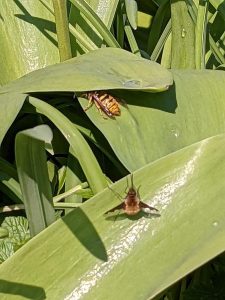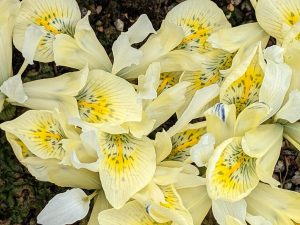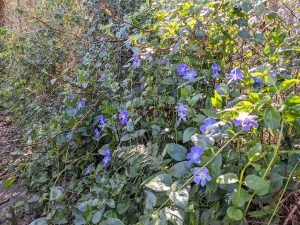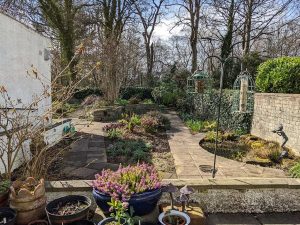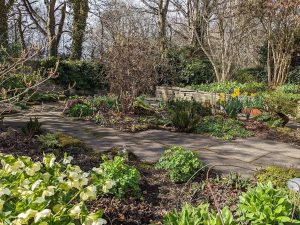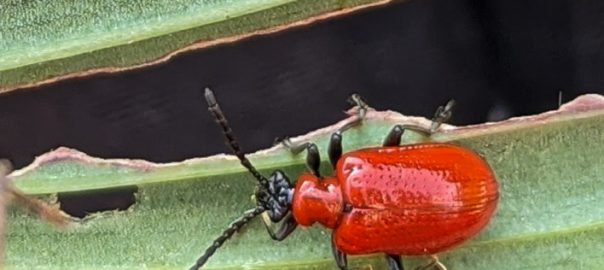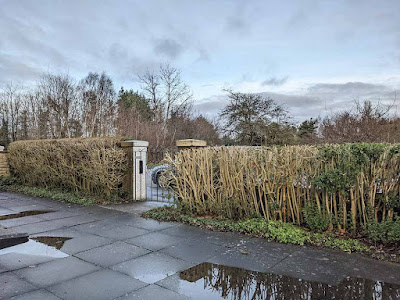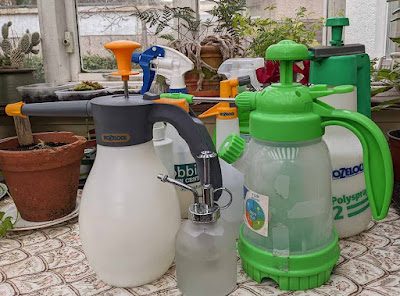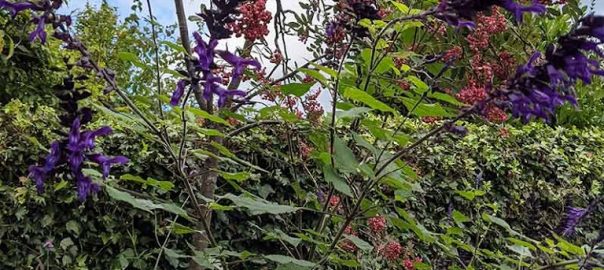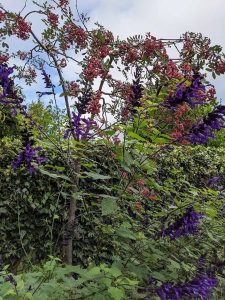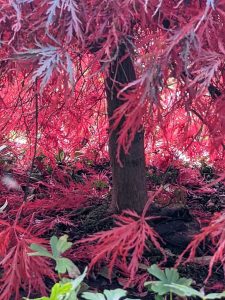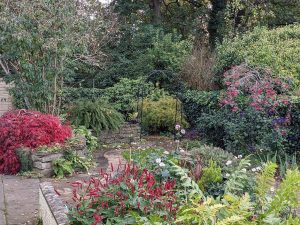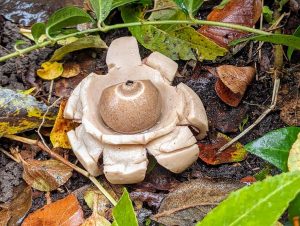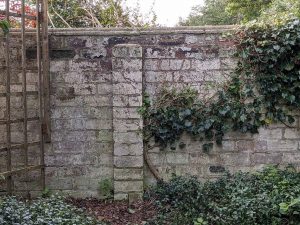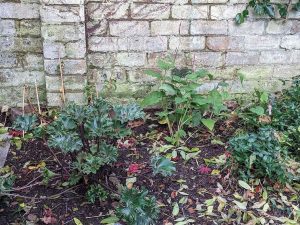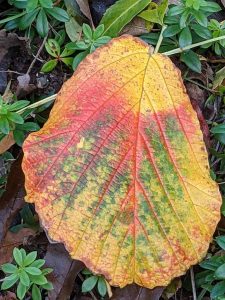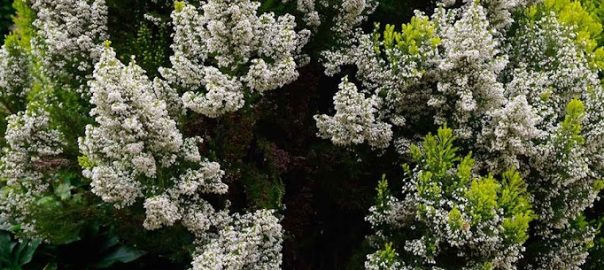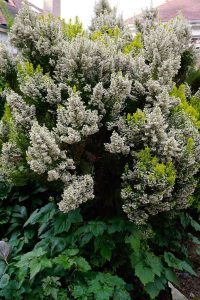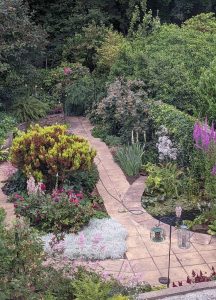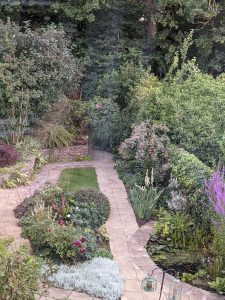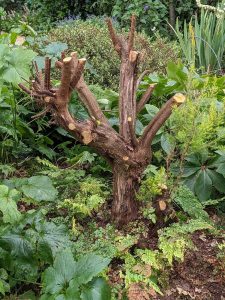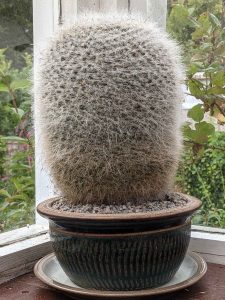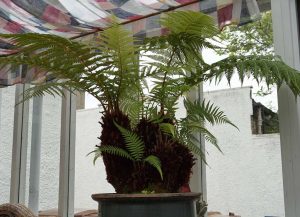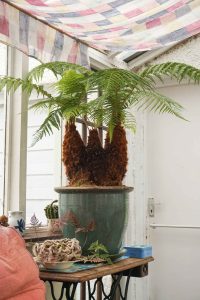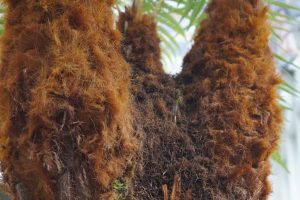It has been pretty cold and wet for the first half of April but has now started to dry out and get a little warmer. Some of the plants are earlier, some are later, and some haven’t come back at all!
I planted smallish yellow tulips Budlight a few years ago, and as they are a species tulip I thought that they would come back each year, but there is no sign of them at all this year. There are two larger yellow tulips which were planted as a clump of about 7 years ago (can’t remember what they are called) and only two have come back this year. All very disappointing.
The tulips Mystic Van Eijk are a little early this year but are looking good in the raised bed.
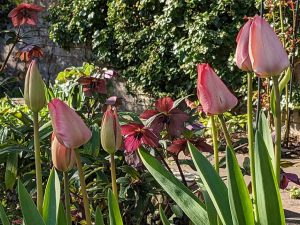 |
| Tulips Mystic Van Eijk |
Most of the narcissi have come up, all except the 10 Segovia that I planted a few years ago in the stumpery. Only three came up this year, and two of them have been eaten so that only a few inches of stem are left. Tete-aTete came up earliest, Pontresina are looking good right now, and Pipit are just coming out now. There was a nice display of narcissi Ataea pontifica in the right hand border but now they are getting decimated by snails or slugs. The white spirea Bridal wreath is looking good just now, as is the
foliage of the pieris Japonica Forest flame in the right hand corner of
the garden. The berberis is flowering away merrily. The hellebore
below it however looks rather tatty. Going over now is the pink Corydalis, in the middle bed, which is spreading like mad. I keep taking clumps out and giving them away. The yellow marsh marigolds in the pond really brighten up that area. The purple hellebores are still doing well, whereas the white ones and paler ones have gone over sooner.
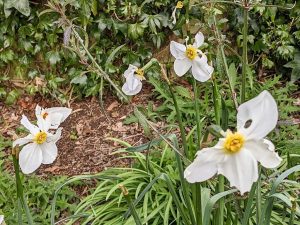 |
| Narcissi Actaea Poeticus eaten by snails/slugs |
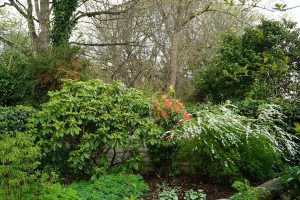 |
| Back right hand corner |
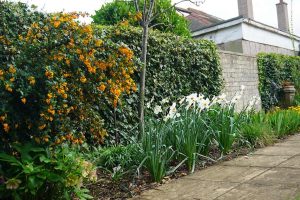 |
| Right hand border |
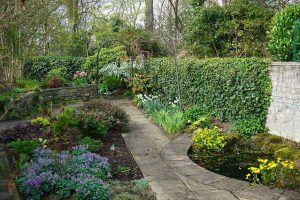 |
| Right hand side of garden and pond April 2022 |
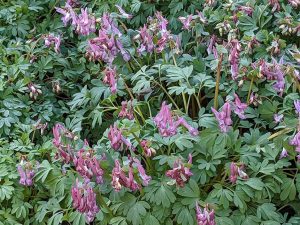 |
| Corydalis solida |
Debs brought round lots of yellow erythroniums and planted them in a few areas of the stumpery (which is on the left side of the garden) and they are doing well despite being nibbled.
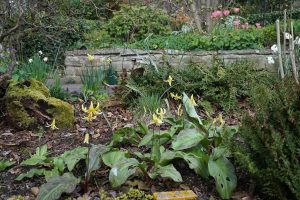 |
| Erythronium yellow |
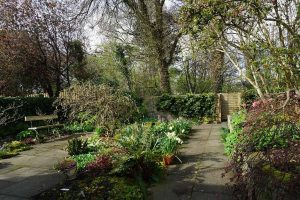 |
| Stumpery April 2022 |
The smaller white erythronium Snowflake have gone over now but the marble foliage still looks good. Also in the stumpery is the pasque flower which is very pretty, and I love it’s fluffy foliage. It is very slowly making a couple of clumps. In flower at the back of the stumpery is purple honesty, brunnera and pulmonaria. There are a few catkins on the tortured witchhazel, and some tiny perfumed white flowers on the osmanthus right up in the back corner of the stumpery which you can’t see here. I had planted a winter flowering honeysuckle beside the osmanthus and although it did flower a little, I thought it might have put on a better show.
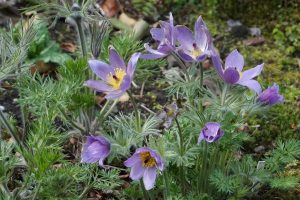 |
| Pale purple Pasque flower |
On the patio there are narcissi Pontressina in flower and in a blue pot there is a lovely pink heather: erica Westwood with a small struggling hellebore in a pot beside it.
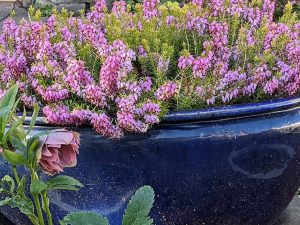 |
| Erica Westwood |
What I would like to do, within the next week, with the area in front of the patio, is to dig up a clump of the red astilbe and maybe put in the red rose that was actually dug out because it had such large prickles, and also to move the cornus a little to make room for the lovely rose Gertrude Jekyll. We were afraid that our new dog would come a cropper to the huge rose prickles but I am sure we can make sure he doesn’t go near it now that he has been with us for a couple of years and is now used to the garden. The conservatory is still to be fixed so we are still waiting for the builders to come up with a date for that work. Otherwise it is mostly watering any newly planted seedlings, putting in plant supports, dead-heading spent flowers, and disposing of slugs.


